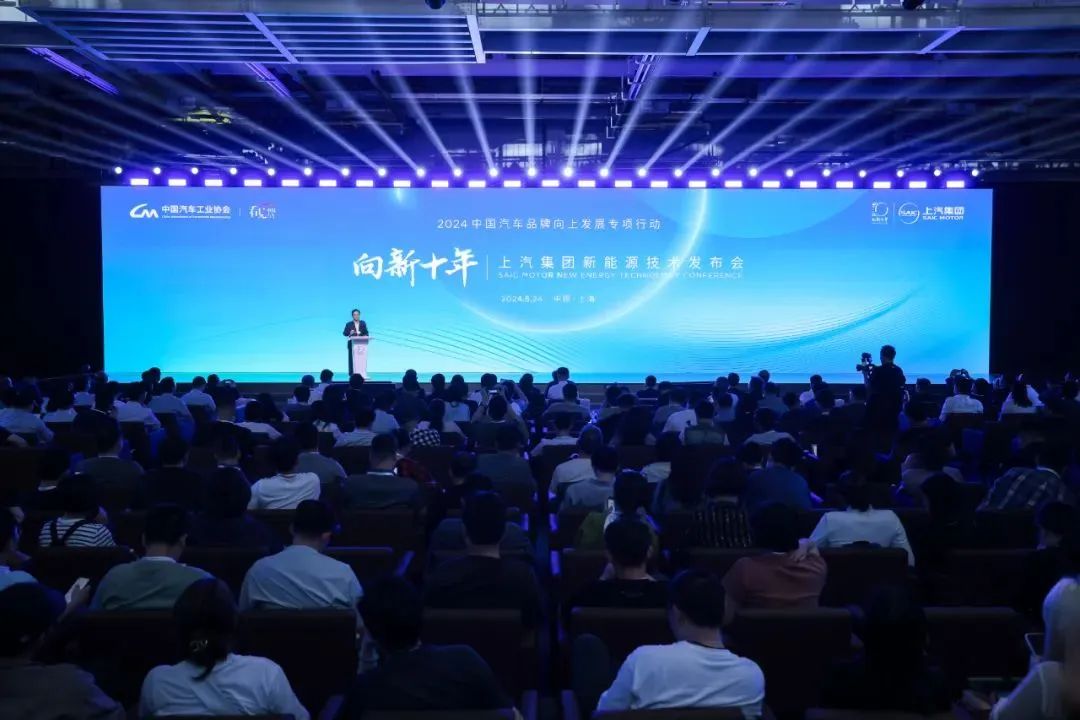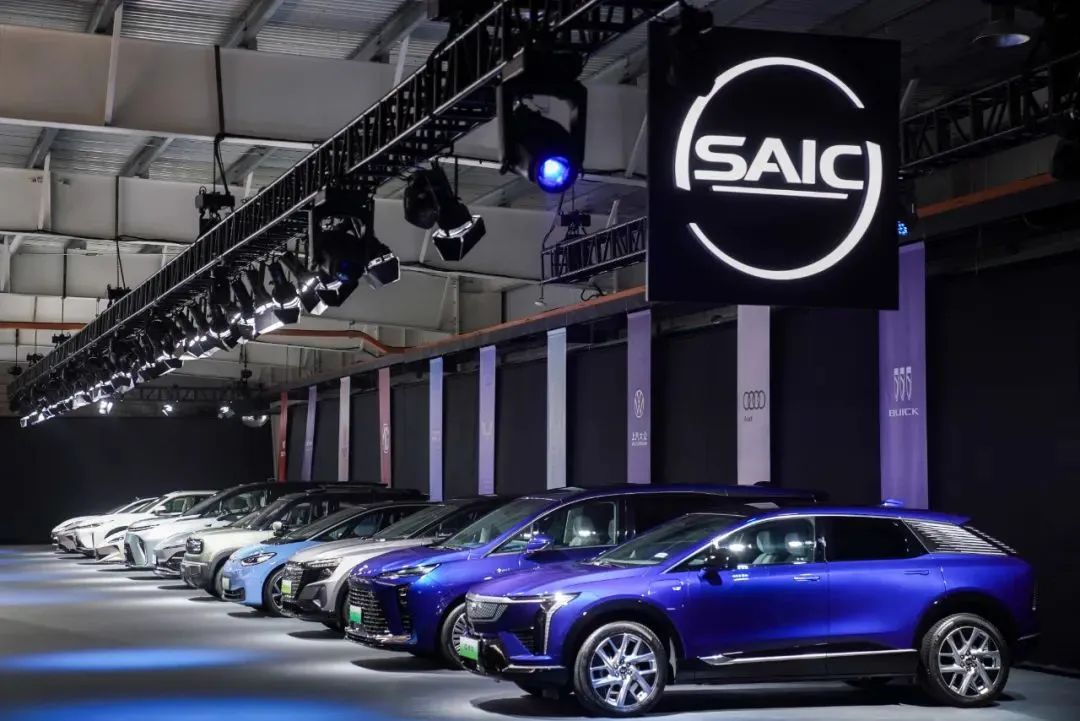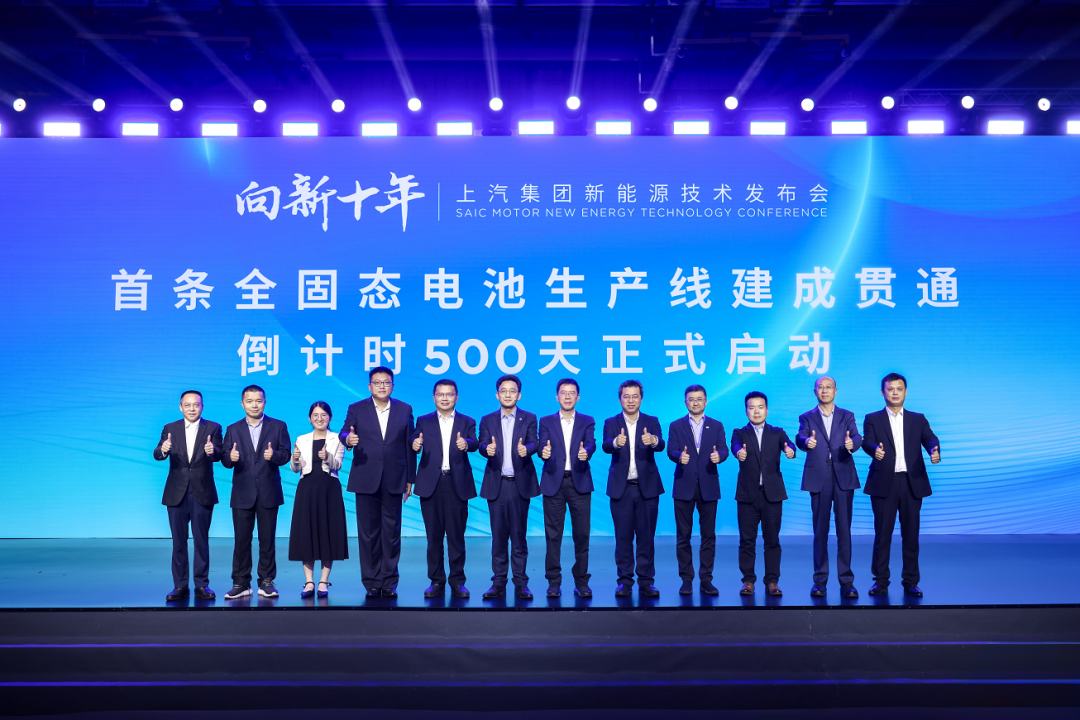SAIC Motor announces new-generation technology foundations
Shanghai (ZXZC)- At the New Energy Technology Conference held on May 24, SAIC Motor officially unveiled its next-generation technology foundation. Leveraging breakthroughs and applications in solid-state batteries, energy closed loops, high-efficiency powertrains, intelligent chassis, full-stack software architecture, and new electronic architecture, SAIC Motor's "seven technology foundations" have fully upgraded to the 2.0 era.

Photo credit: SAIC Motor
Following the trends of "scenario-driven value, software-defined vehicles, and data-determined experience," SAIC Motor is shaping a new "technological life form" that integrates chips, operating systems, software, motion control systems, and three electric systems into the corresponding vehicle scenarios. This is to make new cars "smarter brains, stronger bodies, and more powerful hearts." SAIC Motor is gathering global R&D resources to develop seven technical foundations including batteries, electric drives, super hybrid systems, and full-stack intelligent vehicle solutions, as well as three major vehicle platforms—BEV (battery electric vehicle), PHEV (plug-in hybrid electric vehicle), and hydrogen energy.
The volume production and application of the first-generation "technology foundations" supported SAIC Motor in the continuous breakthrough of its self-owned brand businesses and powering joint ventures. In 2023, SAIC Motor's new energy vehicle (NEV) sales and overseas sales reached 1.123 million and 1.208 million units respectively, achieving new highs over the results achieved in 2022. In 2023, SAIC Motor's self-owned brands accounted for 55.3% of the group's total sales.
This year, the latest technologies such as solid-state batteries, intelligent vehicle "central brains," and digital smart chassis have been put into mass production and applications. SAIC Motor has redefined the concept of "new cars" by deconstructing the vehicle system into "perception, cloud super brain, big and small brains, and line control execution mechanisms," and then reconstructing the system according to a smart human-like architecture: integrating perception architecture to digitize scenario information; deploying AI large models on the "cloud super brain" for self-learning and evolution; distilling learning outcomes to the edge "smart brain" to make planning decisions based on scenarios; the "agile small brain" coordinates real-time, reliable, and stable movement in three directions and six degrees of freedom of the line control chassis. This makes smart electric vehicles akin to high-speed mobile intelligent robots.
SAIC's software arm Z-One has clarified the roadmap for the full-stack architecture of intelligent vehicle cloud management: Z-One Galaxy's Full-stack solution 1.0 achieved "domain centralization," focusing on Level 2++ intelligent driving, smart cockpit, and OTA; Full-stack 3.0 achieves "centralized + regional control," focusing on cost control and Level 3 autonomous driving; future Full-stack 4.0 solutions will focus on smart human-like architecture, AI large models, and AI OS, supporting Level 4/Level 5 autonomous driving.
In 2022, SAIC Motor launched the intelligent vehicle full-stack technology solution—Z-One Galaxy Full-stack 1.0, which has successfully evolved to version 3.0. The "cerebrum" cockpit driving integrated central computing unit and the "cerebellum" vehicle central coordination motion controller (VMC) are developed collaboratively in electronics and software. The VMC, as a regional controller, becomes a critical node in Full-stack 3.0, sharing vehicle sensing and execution signals comprehensively. This enables centralized control of three-direction six-degree-of-freedom motion, and later can achieve features like variable driving characteristics and slip-free driving and braking, providing users with ultimate safety, comfort, and energy efficiency. Furthermore, the Full-stack 3.0 solution fully supports edge applications of large models and production-oriented Level 3 autonomous driving solutions. SAIC Motor, together with partners, has introduced the "ecosystem domain," extending smartphones and other smart terminals into a domain of intelligent vehicles, allowing more brands' smart terminals to connect to Galaxy Full-stack, achieving a seamless smart experience. Currently, SAIC Motor's "ecosystem domain" covers several smartphone brands including OPPO, vivo, Xiaomi, Huawei, and Apple.
The Galaxy Full-stack 3.0 is being gradually installed on vehicles in 2024 and will be fully implemented in 2025. It will effectively reduce the low-voltage power consumption of the vehicle, halve the number of controllers, increase data bandwidth fivefold, reduce wiring harness length by 30%, and shorten OTA download and installation times to under 30 minutes.

Photo credit: SAIC Motor
The "Xingyun" (translating to "Nebula") pure electronic platform realizes broader model gradient coverage, covering the luxury and mid-level car markets, and fully upgrading the platform to meet the needs of entry-level market users. In terms of vehicle energy consumption, the new Xingyun platform aims to achieve a industry-leading target of 12km per kWh, improving over the current level by more than 30%. In terms of user experience, the application of chassis-by-wire technology enhances braking response time by 40%, increases vehicle stability boundary by 20%, and improves vehicle handling and range by more than 3%, reducing vehicle weight by over 3%, and improving cockpit space with a low-speed steering angle of less than 180°, allowing for steering wheel storage. In terms of vehicle safety, the new Xingyun platform meets European five-star crash safety standards, complies with global network data security regulations like UNECE R155 & ECER156 and GDPR, and innovatively applies the "innate safety" theory in product design, significantly enhancing network and data security, reducing risks and losses from external attacks or internal vulnerabilities.
The new "Zhufeng" electromechanical integration vehicle architecture achieves full-scenario coverage. Aiming at all scenarios, all-weather, and global markets, the Zhufeng architecture transitions from "engine-dominated drive" to "motor-dominated drive," covering products from HEVs (hybrid electric vehicles) to PHEVs. Achieving high-level low emissions, SAIC Motor said it will be the first Chinese automaker to achieve carbon emissions below 100g/km in Europe, while the Zhufeng architecture-based products will meet Euro 7 emissions standards.
The new "Xinghe" hydrogen exclusive architecture focuses on fuel cell-powered passenger vehicle usage scenarios, pioneering an extended-range fuel cell passenger vehicle architecture solution, truly achieving "zero carbon zero emissions." The extended-range fuel cell solution means using hydrogen fuel cells as an extender, in series with a power battery and drive motor as the vehicle's drive unit. With nearly 20 years of experience in fuel cell R&D and industrialization, SAIC Motor has achieved full localization of core components and materials. The extended-range fuel cell stack P4M system has a rated power of 45kW, with an efficiency of over 50% at common operating points and a peak efficiency exceeding 55%. The development and industrialization of extended-range fuel cell passenger vehicles are expected to further accelerate the promotion and popularization of hydrogen fuel cell vehicles.

Photo credit: SAIC Motor
SAIC Motor's all-solid-state battery, based on the polymer-inorganic composite electrolyte technology route, will go into mass production in 2026. The company said the battery features a higher energy density exceeding 400Wh/kg, volumetric energy density exceeding 820Wh/L, and battery capacity exceeding 75Ah. It also boats a better safety performance ensuring no fire or explosion in scenarios like nail penetration and 200℃ thermal box, a broader applicability with solid-state battery low-temperature capacity retention rate exceeding 90%, and a lower material costs due to simplification and innovation in materials and processes, with unit costs reduced by up to 40% from cell to battery pack.
In October 2024, the IM L6 BEVs, equipped with the Lightyear solid-state battery, will be delivered to users, with an energy density exceeding 300Wh/kg and a range of over 1,000 kilometers. In 2026, SAIC Motor's all-solid-state battery will achieve mass production and complete prototype testing, with an energy density exceeding 400Wh/kg, more than double that of traditional power batteries; in 2027, the new IM-branded vehicle equipped with the all-solid-state battery will go into mass production and be delivered to users; subsequently, the energy density is expected to further increase to 500Wh/kg.
The new "Blue Core" hybrid powertrain focuses on modularization, integration, and dedicated DMH super hybrid technology. The Roewe D7 DMH model is equipped with a higher precision coaxial clutch, a hybrid-specific engine with a high thermal efficiency operation range of 85%, and the industry's first PICU module integrating engine, transmission, hybrid strategy, thermal management, and air conditioning controls. In tests, it achieved a combined range of up to 1,962 kilometers, with fuel consumption of only 2.8L/100km. The efficiency of the next-generation "Blue Core" will be further improved by 10%. The hybrid-specific engine's thermal efficiency will exceed 46%, and the hybrid transmission will adopt a new "dual coaxial scheme." The new "energy control brain" will more precisely convert thermal, chemical, electrical, and mechanical energy.
The new "Green Core" electric drive system has further improved performance through technical iteration, SAIC Motor added. The updated NPC shaft uses innovative grid oil cooling technology and an ultra-lightweight magnesium-aluminum alloy housing, weighing only 86kg; the effective power density of the motor exceeds 9.5kw/kg, higher than the target of 7kw/kg China set for 2035; the total power density is increased to 4.4kW/kg, leading the industry average by at least 40%.

